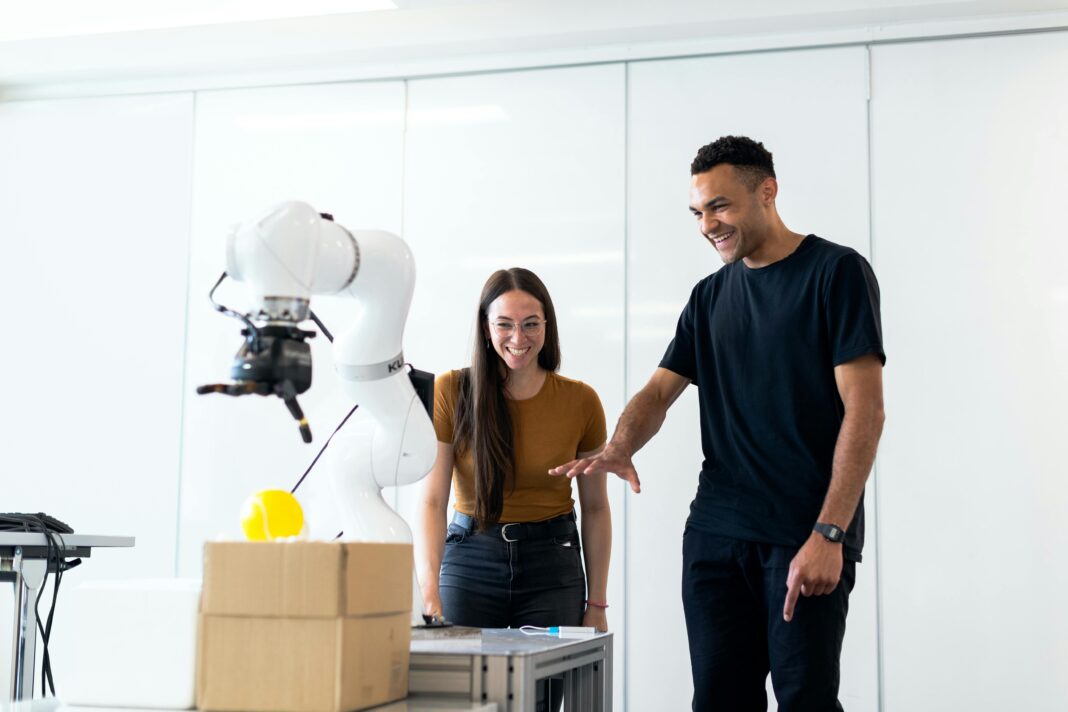Automated testing has become a critical component of modern software development, enabling teams to deliver high-quality applications faster. However, traditional automated testing methods still rely heavily on manual script creation and maintenance, which can be time-consuming and prone to human error. This is where artificial intelligence (AI) comes in—revolutionizing the way testing is performed by introducing self-learning, adaptability, and predictive capabilities.

AI-powered automated testing leverages machine learning (ML), natural language processing (NLP), and computer vision to enhance test creation, execution, and analysis. Unlike conventional automation, AI-driven testing can adapt to application changes, identify patterns in test failures, and even predict potential defects before they occur.
In this comprehensive guide, we will explore:
- The fundamentals of AI in automated testing
- Key benefits and challenges of AI-driven testing
- The best AI-powered testing tools available today
- Step-by-step implementation strategies
- Real-world case studies of AI testing in action
- Future trends shaping the industry
- Frequently asked questions (FAQs)
By the end of this article, you will have a clear understanding of how AI can optimize your testing processes, reduce costs, and improve software reliability.
1. What Is AI-Powered Automated Testing?
Definition and Core Concepts
AI-powered automated testing refers to the use of artificial intelligence to enhance and automate software testing processes. Unlike traditional script-based automation, AI testing tools can:
- Learn from past test executions to improve future test accuracy.
- Self-heal test scripts when application UI elements change.
- Generate test cases automatically based on user behavior analysis.
- Detect visual and functional anomalies using image recognition and ML algorithms.
How AI Differs from Traditional Automation
| Feature | Traditional Automation | AI-Powered Automation |
|---|---|---|
| Script Maintenance | Manual updates required when UI changes | Self-healing scripts reduce maintenance |
| Test Case Generation | Manually written | AI generates tests based on usage patterns |
| Error Detection | Follows predefined rules | Learns from anomalies and predicts failures |
| Execution Speed | Linear execution | Parallel and adaptive testing |
Key AI Technologies Used in Testing
- Machine Learning (ML) – Analyzes historical test data to predict failures.
- Natural Language Processing (NLP) – Allows testers to write test cases in plain English.
- Computer Vision – Compares screenshots to detect visual regressions.
- Reinforcement Learning – Optimizes test strategies over time.
2. Benefits of AI in Automated Testing
1. Faster Test Execution and Feedback Loops
AI enables parallel test execution across multiple environments, reducing testing time by up to 70%. Unlike sequential test runs in traditional automation, AI distributes tests efficiently, providing near-instant feedback to developers.
2. Improved Test Accuracy and Reduced False Positives
Manual testers often encounter false positives (tests failing incorrectly) or false negatives (tests passing despite defects). AI minimizes these errors by:
- Learning from past test results to refine assertions.
- Identifying flaky tests and automatically retrying them.
- Detecting subtle UI changes that humans might miss.
3. Lower Maintenance Effort with Self-Healing Tests
One of the biggest pain points in test automation is script maintenance. When developers modify UI elements (e.g., button IDs or CSS selectors), traditional scripts break. AI-powered tools like Testim and Mabl use ML to:
- Recognize dynamic elements without relying on brittle selectors.
- Auto-correct test scripts when the application changes.
- Reduce script maintenance efforts by over 50%.
4. Enhanced Test Coverage with AI-Generated Test Cases
AI can analyze application usage data and automatically generate test cases for:
- Edge cases (unusual user inputs).
- Regression scenarios (previously fixed bugs).
- Performance bottlenecks (high-load conditions).
This ensures broader test coverage without manual effort.
5. Predictive Analytics for Risk-Based Testing
AI can prioritize test cases by predicting:
- Which parts of the application are most likely to fail.
- Which tests should run first based on recent code changes.
- Potential security vulnerabilities before they are exploited.
3. Top AI-Powered Testing Tools
1. Testim
- Best for: Web and mobile app testing
- Key Features:
- Self-healing locators to prevent script breakage.
- ML-based test stabilization.
- Integrates with CI/CD pipelines (Jenkins, CircleCI).
2. Applitools
- Best for: Visual regression testing
- Key Features:
- AI-powered screenshot comparison.
- Detects UI inconsistencies across browsers.
- Supports cross-device testing.
3. Mabl
- Best for: Low-code AI test automation
- Key Features:
- Auto-generates test scripts from user flows.
- Self-healing capabilities.
- Built-in analytics for test insights.
4. Functionize
- Best for: Enterprise-scale testing
- Key Features:
- NLP-based test creation (write tests in plain English).
- Self-adaptive tests for dynamic applications.
- Cloud-based execution.
5. ReTest
- Best for: Regression testing
- Key Features:
- AI-driven test maintenance.
- Automatically identifies redundant tests.
- Integrates with Jira and Selenium.
4. How to Implement AI in Your Testing Workflow
Step 1: Identify High-Impact Test Cases for AI
Start with:
- Repetitive tests (login flows, form submissions).
- Regression tests (critical business workflows).
- Visual validation tests (UI consistency checks).
Step 2: Select the Right AI Testing Tool
Consider:
- Tech stack compatibility (web, mobile, APIs).
- Ease of integration (CI/CD support).
- Cost vs. ROI (start with a pilot project).
Step 3: Train AI Models with Historical Test Data
- Feed past test logs to improve AI accuracy.
- Continuously refine models with new test runs.
Step 4: Monitor and Optimize AI Performance
- Track false positives/negatives.
- Adjust AI thresholds for better precision.
- Combine AI with manual review for critical tests.
5. Challenges and Solutions in AI Testing
Challenge 1: High Initial Setup Cost
Solution: Start small with a pilot project to demonstrate ROI before scaling.
Challenge 2: AI Misinterpretations in Complex Scenarios
Solution: Use hybrid testing (AI + manual review) for critical workflows.
Challenge 3: Data Privacy Concerns
Solution: Ensure AI tools comply with GDPR and other regulations.
6. Real-World Case Studies
Case Study 1: Google’s AI-Powered Test Prioritization
- Problem: Thousands of tests running on every code commit.
- Solution: AI predicts which tests are most likely to fail, reducing execution time by 40%.
Case Study 2: Netflix’s Visual Regression Testing
- Problem: UI inconsistencies across devices.
- Solution: Applitools AI detects visual bugs before they reach production.
7. Future Trends in AI Testing
- Autonomous Testing – AI will design, execute, and fix tests without human input.
- Voice-Activated Testing – Testers will use voice commands to create and run tests.
- AI-Driven Security Testing – ML will predict vulnerabilities before exploitation.
FAQs
Q1: Will AI replace manual testers?
No, AI enhances testers by automating repetitive tasks, allowing them to focus on complex scenarios.
Q2: Is AI testing suitable for small teams?
Yes, cloud-based AI tools (e.g., Mabl) offer affordable, scalable solutions.
Q3: How accurate is AI in defect detection?
AI achieves 90-95% accuracy in stable environments but should be combined with human oversight.
Conclusion
AI is transforming automated testing by improving speed, accuracy, and efficiency. The key to success lies in:
- Starting with high-impact test cases.
- Choosing the right AI tools for your needs.
- Continuously monitoring and refining AI models.
Next Step: Pick one AI testing tool and run a pilot project within the next two weeks.

